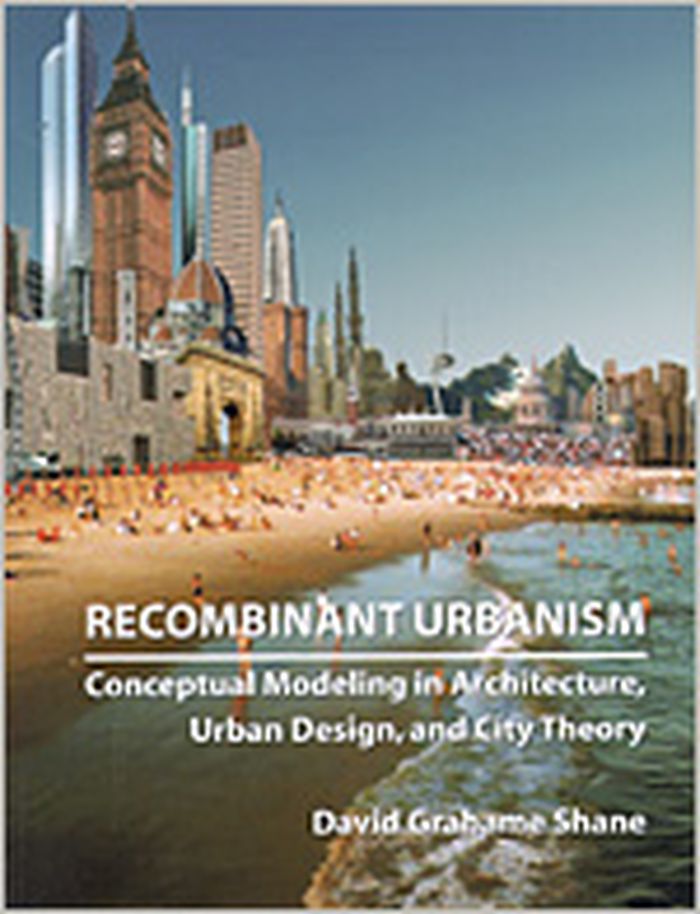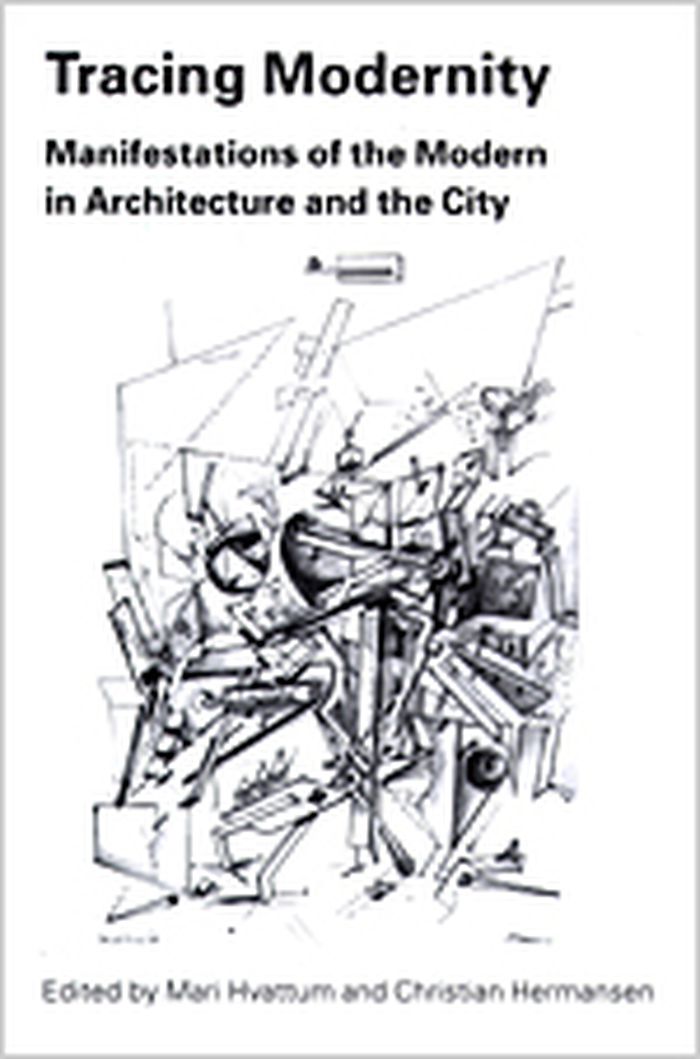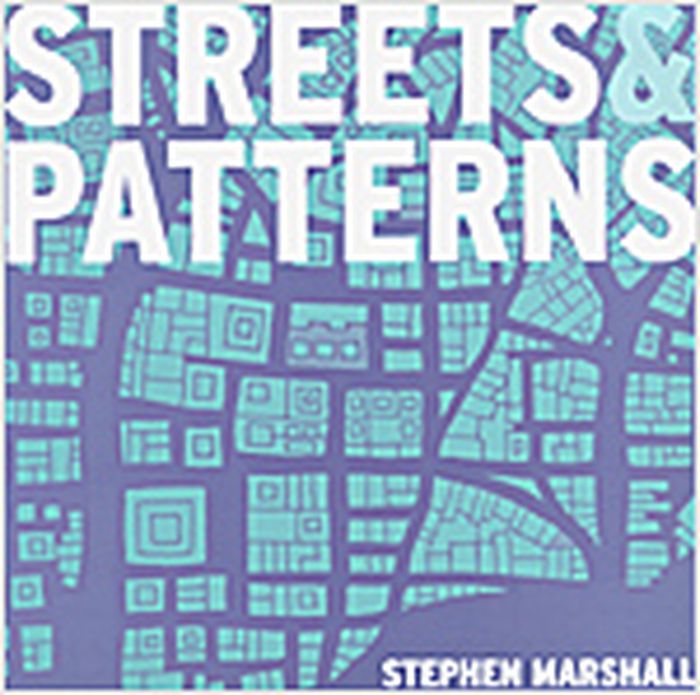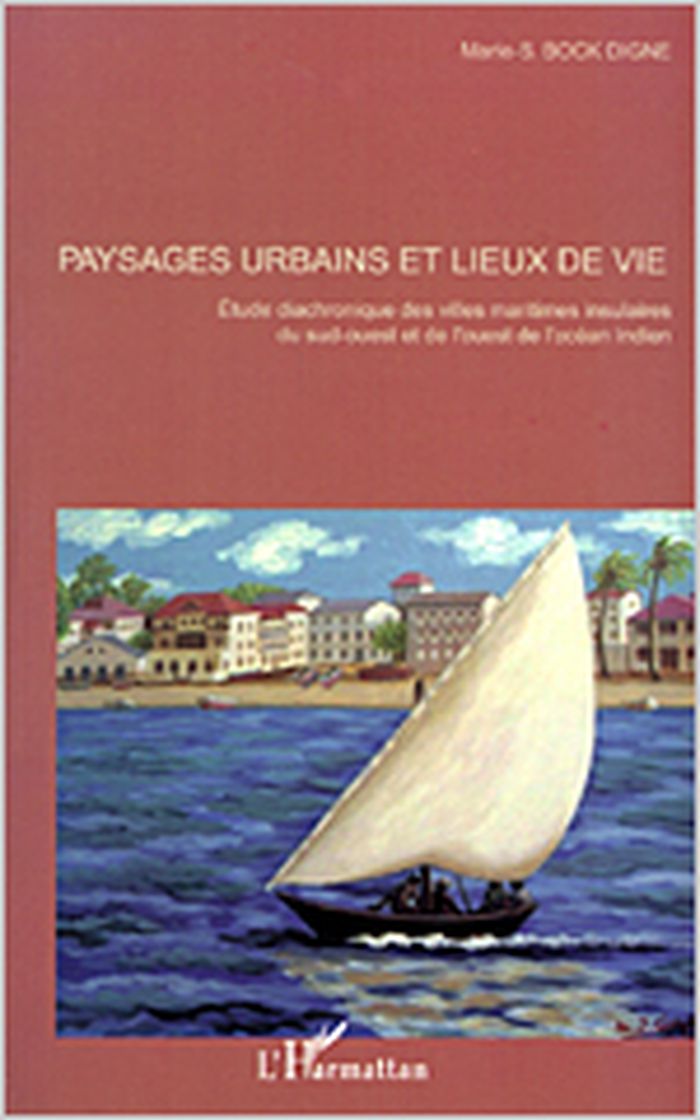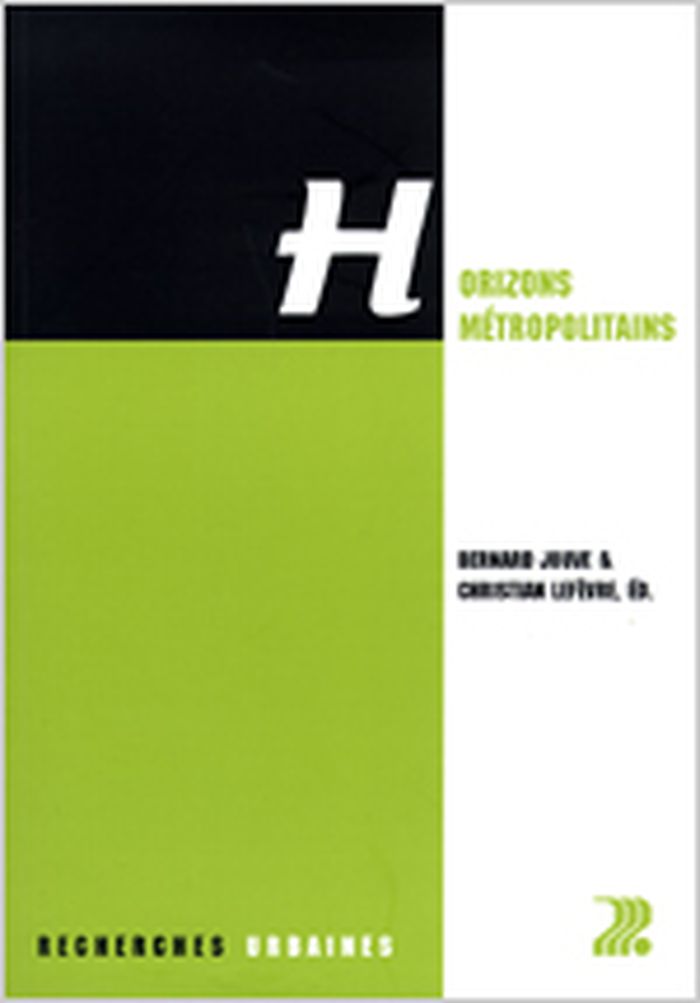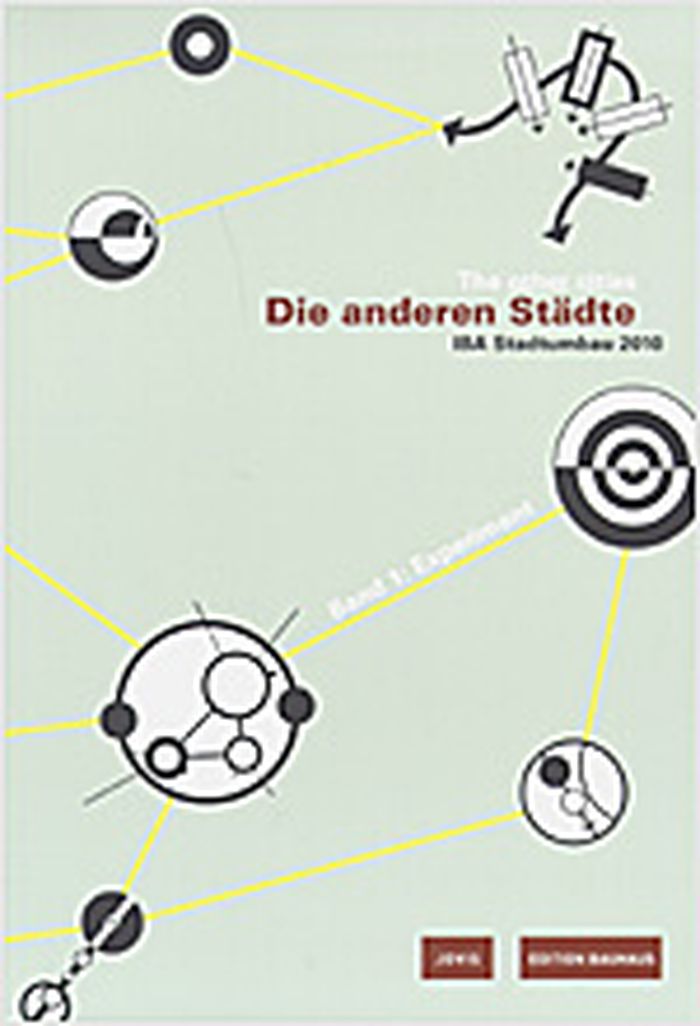$60.99
(available to order)
Summary:
Providing a potent set of tools for urban designers and urban-design students, 'Recombing urbanism' also recast urban modelling as an effective method of augmenting standard architectural design practices in an urban context.
Recombinant urbanism : conceptual modeling in architecture, urban design, and city theory
Actions:
Price:
$60.99
(available to order)
Summary:
Providing a potent set of tools for urban designers and urban-design students, 'Recombing urbanism' also recast urban modelling as an effective method of augmenting standard architectural design practices in an urban context.
Urban Theory
books
$22.95
(available to order)
Summary:
Informed by the work of writers such as Henri Lefebvre, Paul Ricouer and Michel de Certeau, this collection of essays examines from multiple perspectives eight topics related to the contemporary urban domain.
Passages : explorations of the contemporary city
Actions:
Price:
$22.95
(available to order)
Summary:
Informed by the work of writers such as Henri Lefebvre, Paul Ricouer and Michel de Certeau, this collection of essays examines from multiple perspectives eight topics related to the contemporary urban domain.
books
September 2004, Calgary
Urban Theory
$60.95
(available to order)
Summary:
From the seventeenth century until today, the "modern" has served as a key category by which to understand an ever-changing present. Art and architecture have played a key role in this pursuit, as the means by which "the modern" was to manifest itself. The essays in this new anthology trace the modern project through its multifarious manifestation in order to understand(...)
Tracing modernity : manifestations of the modern in architecture and the city
Actions:
Price:
$60.95
(available to order)
Summary:
From the seventeenth century until today, the "modern" has served as a key category by which to understand an ever-changing present. Art and architecture have played a key role in this pursuit, as the means by which "the modern" was to manifest itself. The essays in this new anthology trace the modern project through its multifarious manifestation in order to understand contemporary culture in a deeper sense than discussions of "modernism" and "post modernism" usually offer. Drawing on architectural and urban history as well as philosophy and sociology, the book outlines the complex and conflicting roots of modernity by tracing its manifestations in architecture and the city.
Urban Theory
Streets & patterns
$97.95
(available to order)
Summary:
This book sets out a series of concepts of street structure and offers a framework for design of street networks. It addresses issues of sustainable transport and urbanism whilst introducing new methods assisting analysis and design. International streetgrid case studies are analysed and preferred types of street, network and hierarchy are suggested.
Streets & patterns
Actions:
Price:
$97.95
(available to order)
Summary:
This book sets out a series of concepts of street structure and offers a framework for design of street networks. It addresses issues of sustainable transport and urbanism whilst introducing new methods assisting analysis and design. International streetgrid case studies are analysed and preferred types of street, network and hierarchy are suggested.
Urban Theory
$54.95
(available to order)
Summary:
Le problème de l'évolution spatiale, territoriale et socioculturelle des villes maritimes et portuaires du sud-ouest et de l'ouest de l'Océan Indien ( Zanzibar, Moroni, Mamoudzou, Mahajanga, Toamasina, Antsiranana, Saint-Denis de la Réunion, Port-Louis) constitue cette étude. Celle-ci s'organise, non seulement autour de l'interaction espace, architecture et société, mais(...)
Paysages urbains et lieux de vie : étude diachronique des villes maritimes insulaires de sud-ouest et de l'ouest de l'océan Indien
Actions:
Price:
$54.95
(available to order)
Summary:
Le problème de l'évolution spatiale, territoriale et socioculturelle des villes maritimes et portuaires du sud-ouest et de l'ouest de l'Océan Indien ( Zanzibar, Moroni, Mamoudzou, Mahajanga, Toamasina, Antsiranana, Saint-Denis de la Réunion, Port-Louis) constitue cette étude. Celle-ci s'organise, non seulement autour de l'interaction espace, architecture et société, mais aussi autour de l'importance que revêt le territoire dans le cadre du développement urbain, caractérisé aussi par la diversité des populations qui les structurent.
Urban Theory
Horizons métropolitains
$78.00
(available in store)
Summary:
En l'espace d'une quarantaine d'années, les conditions de l'urbanisation ont très nettement changé, aussi bien dans les pays développés que dans les pays en développement. Le poids démographique des villes, leur morphologie, leur fonctionnalité, leur poids économique, les problèmes sociétaux qui sont générées au sein de ces systèmes territoriaux particuliers constituent(...)
Horizons métropolitains
Actions:
Price:
$78.00
(available in store)
Summary:
En l'espace d'une quarantaine d'années, les conditions de l'urbanisation ont très nettement changé, aussi bien dans les pays développés que dans les pays en développement. Le poids démographique des villes, leur morphologie, leur fonctionnalité, leur poids économique, les problèmes sociétaux qui sont générées au sein de ces systèmes territoriaux particuliers constituent autant de dynamiques qui ont conduit à faire des métropoles des territoires de première importance. Cet ouvrage aborde cette problématique sous un angle davantage politique en se focalisant sur les transformations que connaissent plusieurs métropoles européennes du point de vue de leur modes de gouvernance. A travers la comparaison entre Genève-Lausanne, Lyon, Marseille, Naples, Stuttgart et Zürich, il entend analyser les changements et les facteurs de stabilité qui accompagnent la métropolisation, d'une part dans les relations intergouvernementales, d'autre part dans les relations entre les élus politiques et la société civile et, enfin, dans le type de politique pratique.
Urban Theory
books
$69.00
(available to order)
Summary:
Cet ouvrage collectif présente une vision interdisciplinaire des problématiques actuelles de l'urbain, à savoir les modalités de démocratie participative, de politique locale et d'aménagement urbain. Les différentes contributions témoignent des discussions engagées entre chercheurs seniors et juniors pendant l'université d'été transfrontalière 2001 à Morges en Suisse. Ce(...)
Concerter, gouverner et concevoir les espaces publics urbains
Actions:
Price:
$69.00
(available to order)
Summary:
Cet ouvrage collectif présente une vision interdisciplinaire des problématiques actuelles de l'urbain, à savoir les modalités de démocratie participative, de politique locale et d'aménagement urbain. Les différentes contributions témoignent des discussions engagées entre chercheurs seniors et juniors pendant l'université d'été transfrontalière 2001 à Morges en Suisse. Ce croisement de regards et de connaissances permet de faire émerger de nouvelles pistes de réflexion et d'approches scientifiques relatives aux problématiques de l'urbain. L'ouvrage se structure autour de trois parties. La première partie " Concerter - Faire émerger et confronter les savoirs urbains multiples " oriente le propos sur les concepts et les pratiques qui s'intéressent aux différents types d'acteurs urbains et à leur intégration dans les processus de démocratie locale. La deuxième partie: " Gouverner - Inventer et gérer la réalité métropolitaine incertaine " reprend la discussion sur les changements d'action publique par rapport à la restructuration du système de représentation politique de l'urbain. La troisième partie : " Concevoir - Projeter et aménager les territoires urbains enchevêtrés " prend en compte la transformation et la redéfinition des territoires urbains et met en évidence les influences de ces transformations sur l'aménagement urbain. La conclusion générale présente les nouveaux enjeux par rapport aux manières de concerter, de gouverner et de concevoir les territoires urbains qui ont émergé du débat interdisciplinaire et interculturel.
books
June 2004, Lausanne
Urban Theory
$52.00
(available to order)
Summary:
In "Chicago Architecture", Charles Waldheim and Katerina Rüedi Ray revise and offer alternatives to the archetypal story of modern architecture in Chicago. They and an esteemed group of contributors assert that the mythic status of Chicago architecture has distorted our understanding of the historical circumstances in which it was realized. This searching volume(...)
Urban Theory
January 2005, Chicago
Chicago architecture : histories, revisions, alternatives
Actions:
Price:
$52.00
(available to order)
Summary:
In "Chicago Architecture", Charles Waldheim and Katerina Rüedi Ray revise and offer alternatives to the archetypal story of modern architecture in Chicago. They and an esteemed group of contributors assert that the mythic status of Chicago architecture has distorted our understanding of the historical circumstances in which it was realized. This searching volume illuminates the importance of photographs, books, magazines, and other media in the cultivation of an international audience for Chicago architecture; it explores the pivotal role of real estate developers, finance and insurance sectors, and speculative capital markets in the development of the city itself; and, perhaps most notably, it examines a wide variety of overlooked architectural works and their creators - individuals who did not fit into the dominant modernist narrative.
Urban Theory
books
$45.95
(available to order)
Summary:
The German pavilion at the 9th Venice Architecture Biennale offers an overview of more than 35 contemporary architectural projects in Germany which have manifested in peripheral urban areas, suburban spaces, and de-industrialized zones. The projects reveal the transformation and reactivation of banal everyday architecture--business parks, switching stations, water(...)
Deutschlandscape : epicentres at the periphery - German pavilion, Venice Biennale 2004
Actions:
Price:
$45.95
(available to order)
Summary:
The German pavilion at the 9th Venice Architecture Biennale offers an overview of more than 35 contemporary architectural projects in Germany which have manifested in peripheral urban areas, suburban spaces, and de-industrialized zones. The projects reveal the transformation and reactivation of banal everyday architecture--business parks, switching stations, water purification plants, and strictly coded and conventional housing types--to open up a new perception of the "deutschlandscape." Here, architectural norms are reworked and given a new aesthetic twist through ironic self-reflection. These built projects by a critical young generation of German architects reveal highly innovative use of new materials, generate suburban "plug-ins" (temporary and mobile architecture), and skillfully rework the familiar to create solutions for hitherto underrepresented yet vital areas on the urban fringe. Accompanying essays and interviews reveal the personal narratives behind the architecture. Contributions include: "urban therapist" Sonja Beeck on dealing with the psychological dimensions of shrinking cities in the former GDR; artist and urbanist Kai Vöckler on the German psychoscape; Omar Akbar of the Bauhaus Dessau on the wider implications of urban sprawl; Peter Cook on tuning suburbia; Angelika Fitz on strategic answers to restrictive building regulations; Peter Wilson on the marketing of place; and Rudolf Stegers on multi-layered meanings behind the architectural image.
books
November 2004, Ostfildern
Urban Theory
$32.50
(available to order)
Summary:
Everyone is talking about shrinking. Many talk of emerging opportunities. In its first book, the International Building Exhibition (IBA) Urban Redevelopment Saxony-Anhalt 2010 discusses the shape of tomorrow's city, the international dimension of shrinking and urban redevelopment, and the challenges facing planning. This volume presents the full panorama of IBA cities(...)
The other cities - Die anderen städte - IBA Stadtumbau 2010
Actions:
Price:
$32.50
(available to order)
Summary:
Everyone is talking about shrinking. Many talk of emerging opportunities. In its first book, the International Building Exhibition (IBA) Urban Redevelopment Saxony-Anhalt 2010 discusses the shape of tomorrow's city, the international dimension of shrinking and urban redevelopment, and the challenges facing planning. This volume presents the full panorama of IBA cities in Saxony-Anhalt and describes the working methods of the first IBA to focus on the city as a whole.
Urban Theory
